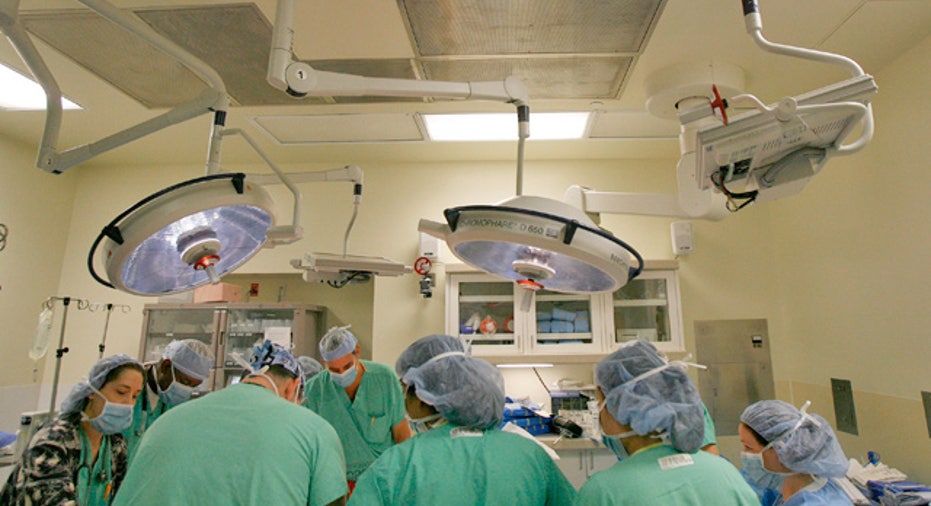Increase in Plastic Surgery a Sign of Better Economic Times?

As the economy improves and savings accounts rebound, more consumers going are under the knife to improve their appearance. According to a recent study by the American Society of Plastic Surgeons, cosmetic procedures including facelifts, Botox and breast augmentation rose by 5% from 2009 to 2010.
“What we’re seeing today is 100% related to the improvement in the economy,” says Dr. Craig Vander Kolk, a plastic surgeon at Mercy Medical in Baltimore, Md. “People are finally feeling more comfortable with their financial situation as they see their job security return, and they’re much happier putting their disposable income into a luxury item than they were two or three years ago.”
During 2010, 13.1 million plastic surgery procedures were performed, according to the ASPS, which noted a trend toward more invasive procedures like facelifts and rhinoplasty. Facelifts were up 9% in 2010, while thighlifts (often done following extensive weight loss) were up 8% and breast augmentation surgery ticked up 2%.
“Every person out there has considered having plastic surgery,” says Vander Kolk “Whether they choose to have it or not is another story, but stability in the market makes people feel more comfortable investing in themselves.”
Certainly, more money in the bank is a good reason to bite the bullet on a luxury procedure, but ironically, a bad economy may be just as much of a driver behind the increase in surgery.
“There are many people driven into plastic surgery who are using it to look younger so they can get a job in what is still a very tough economy,” says Adam Hanft, founder of Hanft Projects, a branding strategy and marketing firm. “It’s really a signal to continuing stress we’re seeing in the economy. Older people are doing it to make themselves more agile competitors as they search for work.”
And for those out searching for work, the downtime between jobs may be important when considering an invasive procedure, according to Kolk.
“It’s difficult to take three weeks off work for a facelift. It’s involved, and it takes time for recovery, sometimes as much as a month if you don’t want anyone to know that you had work done.”
For many older-than-50 members of the work force, plastic surgery has become the equivalent of a “new suit,” Hanft says. But the desire to look good isn’t the only reason numbers are up--a loosening in the credit markets within the last year could also be sending more people to the doctor.
“Statistically, a vast amount of cosmetic surgery procedures are put on credit cards, and in 2009 it was difficult to get that credit, but things have relaxed substantially in 2010, moving into this year,” says Hanft. Many plastic surgeons are also offering financing for patients that was previously off the table when the economy was tighter.
Yet even as the working population ages and the economy improves, another large factor in plastic surgery’s popularity can’t go overlooked.
“It’s the new normal,” Hanft says. “People are returning to their old ways, and cosmetic work is the most intimate form of consumerism there is. We see cosmetic surgery everywhere—on TV, in movies, it’s become part of our consciousness, and anytime that happens, an increase in popularity follows closely behind.”
Although more people are opting for intensive surgery, minimally-invasive procedures are also up 5%, according to the ASPS. A total of almost 11.6 million minimally-invasive procedures including chemical peels, laser hair removal and Botox injections were performed in 2010.
“We have reached an equilibrium where people say they are going to allow themselves to have a few luxury items here and there,” says Dr. Raghu Athre, a plastic surgeon at Athre Surgical Associates in Clear Lake, Texas. “Certain minimally-invasive procedures have come down in price and have become commodity items.”
For example, Radiesse, a filler agent that is injected into wrinkles around the mouth and on the forehead has come down in price to $525 from $800 in 2009. The company that makes the product, Athre says, dropped the price as part of a marketing push and is reaping the rewards. Other similar products like Botox and Restylane have followed suit, and have reached a new threshold that makes them more accessible to the general public.
And procedures of all types will likely become more accessible in the coming year, Athre said.
“Like any other industry, plastic surgery goes up and down, but we are seeing a big uptick right now. Take a look around. There are a lot of deals out there.”



















